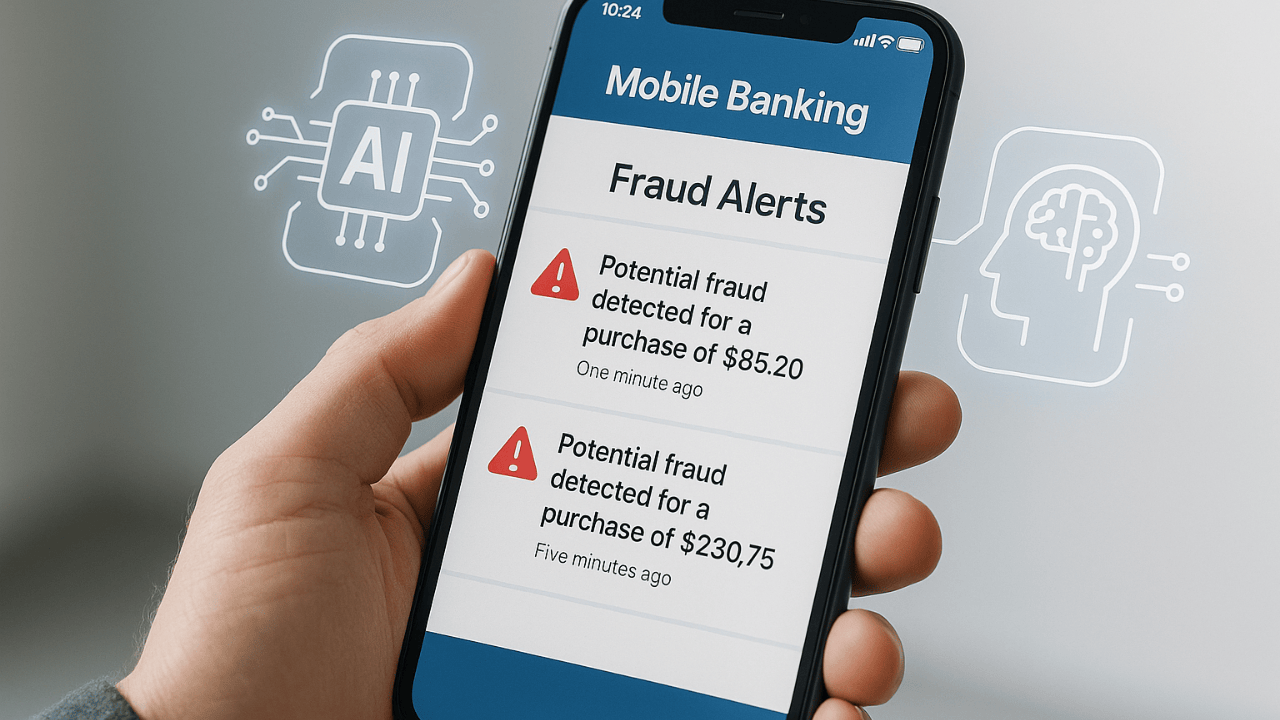Advanced AI banking applications are transforming how community banks in the United States operate, serve their customers, and stay competitive. From smarter fraud prevention to ultra-personalized services, artificial intelligence is no longer a futuristic idea. It is a hands-on tool that is working behind the scenes to make decisions faster, reduce human error, and give small and mid-sized banks a fighting chance against financial giants and fintech challengers.
Community banks have always played a different game than the big players. They focus more on relationships, local knowledge, and trust. But as banking becomes more digital every year, community banks are tapping into AI to keep that personal touch while also getting faster, smarter, and more efficient. The magic is not in replacing people. It is in helping people work better and serve smarter.
So what are these banks doing exactly? What kind of AI applications are not just popular but actually getting results? And how are they using these tools without losing the human side that defines community banking?
TL;DR Curious Where This Is Going?
- Peek into how AI is helping community banks fight fraud in real time
- Discover how chatbots are changing the customer experience
- Find out what predictive analytics can really do in banking
- See how AI helps banks make better loans
- Learn what it takes to keep AI ethical and human-friendly
Fighting Fraud Before It Even Happens
Bank fraud used to be reactive. Someone would steal money, then the bank would try to patch things up. Now, with AI, it is proactive. Community banks are using machine learning models that study patterns in transaction data. These systems get smarter every day, constantly updating what they consider “normal” and spotting anything that looks out of place.
One of the strongest tools in this fight is anomaly detection. For example, if a customer always spends within a certain region, a sudden transaction overseas at 3 a.m. can be flagged immediately. AI also examines the speed, size, and location of purchases and can even factor in device IDs and IP addresses. Some banks use biometric data and facial recognition to double check identity during sensitive transactions.
Unlike traditional rule-based systems, AI fraud detection does not need someone to define every single rule. It learns from past fraud cases and recognizes even subtle patterns that a human might miss. According to IBM, modern AI tools can cut fraud losses by up to 40 percent (Source: IBM).
What makes this a game-changer for community banks is cost. AI tools are becoming more affordable and scalable, even for banks that do not have a massive IT department. It is giving smaller players a fighting chance against tech-savvy fraudsters.
Customer Service That Never Sleeps
Waiting on hold for customer service is becoming a thing of the past. AI-powered chatbots are answering questions, handling routine tasks, and even guiding customers through complex issues 24 hours a day. For community banks, this means better service without needing to expand call center staff.
These chatbots are not just simple Q&A machines. They use natural language processing to understand what a customer means, not just what they say. They can pull account info, process transfers, set up alerts, and even flag more complex problems for a human rep to follow up on. Some chatbots are even integrated into mobile apps and online banking portals so users can get help wherever they are.
But here is what really matters. Smart banks are using these tools to support human staff, not replace them. AI handles the repetitive questions, freeing up employees to handle the trickier or more personal conversations. This balance keeps the bank efficient without losing the community feel.
As voice AI improves, more banks are experimenting with voice-enabled assistants similar to Alexa or Siri. The key is not just to add tech, but to make sure it works seamlessly with real human support when needed.
Smarter Lending with Predictive Analytics
Lending decisions are one of the most important jobs a community bank handles. And Advanced AI Banking Applications are making it easier to do that job right. With predictive analytics, banks can look beyond a simple credit score. They can now evaluate dozens or even hundreds of data points at once to get a clearer picture of risk and opportunity.
These systems might analyze account activity, income trends, spending behavior, employment history, and even social signals. Some AI tools also help banks identify loan applicants who are likely to succeed even if they do not meet every traditional requirement.
For community banks, this means making loans more accessible to people who might be overlooked by big banks. It also means catching risks earlier before they become a problem. AI can flag early signs of loan stress like missed payments, cash flow changes, or unusual spending before a person even defaults.
What used to take days of paperwork and back-and-forth communication is now being handled in hours or minutes. This speed matters. It helps community banks compete with online lenders who often promise same-day approvals.
And because AI systems learn from each decision, they keep getting better. Every approved or declined application helps sharpen the accuracy of future ones.
Personalization That Actually Feels Personal
The average person interacts with their bank digitally more often than in person. But that does not mean they want a cold, robotic experience. AI is helping community banks deliver personal service at scale, even online.
Banks are now using AI to create personalized financial advice, suggest the right products, and even send custom alerts based on individual behavior. For example, a customer who regularly gets paid on the first of the month might get a friendly nudge a few days before payday if their balance is running low.
AI can also help banks target promotions more effectively. Instead of blasting everyone with the same offer, AI tools can suggest products only to customers who actually need them based on life stage, transaction history, and financial goals.
Some systems are designed to recognize emotional tone in messages or emails and flag when a customer might be upset or confused. This helps banks follow up more thoughtfully and keep relationships strong.
It is not just about offering more features. It is about knowing when and how to offer them so that people feel understood and respected.
Compliance and AI That Does Not Cross the Line
AI can do a lot, but banks still need to stay within the rules. For community banks, which often do not have massive legal teams, using AI tools responsibly is essential. Developing Advanced AI Banking Applications that are custom tailored to your specific needs means no more duct taped systems.
One concern is bias. AI systems are only as fair as the data they are trained on. If past lending patterns were unfair to certain groups, the AI might carry those biases forward unless carefully monitored. This is why community banks are leaning on explainable AI systems that show how they made a decision and what factors were considered.
Transparency is also key for regulators. Many AI applications now include audit trails and dashboards so banks can see what the AI is doing and why. This helps with compliance reporting and keeps human oversight in the loop.
Finally, cybersecurity is a growing issue. AI helps spot suspicious network behavior and prevent data breaches. But it also creates new entry points. Community banks are investing in AI-driven cybersecurity platforms that can monitor threats in real time without needing huge internal teams.
So even as banks adopt more AI, they are also learning how to use it without giving up control.
Why AI Works So Well for Community Banks
Most of the early headlines about AI in banking focused on the giants like JPMorgan or Bank of America. But community banks are in a unique position to benefit from AI tools.
For one, their smaller size allows them to move faster. There is less red tape, fewer layers of management, and more flexibility to try new tools on a small scale. Many community banks are using plug-and-play AI solutions that do not require custom builds or in-house developers.
Second, these banks already know their customers well. So AI becomes a tool to deepen that relationship instead of replacing it. When Advanced AI Banking Applications are used to support conversations instead of automate them, it strengthens trust instead of weakening it.
And perhaps most importantly, community banks often face stiffer competition from fintech startups and digital-only banks. AI levels the playing field. It gives smaller banks the ability to deliver digital-first services without losing the relationship-driven core they are known for.
Here is how some AI applications compare across common use cases:
| AI Application | Big Banks | Community Banks | Benefits for Smaller Banks |
| Chatbots | Fully integrated | Scaled for FAQs | Handles support without full staff |
| Fraud Detection | Advanced systems | Cloud-based tools | Real-time alerts and action |
| Loan Underwriting | Automated pipelines | Partnered scoring models | Better decisions with less bias |
| Personalization | Broad targeting | Individual-level alerts | Feels personal without extra staff |
| Compliance Reporting | In-house legal teams | AI dashboards | Tracks and explains decisions |
Key Takeaways
Community banks across the United States are using Advanced AI banking applications to stay ahead in a rapidly changing world. These tools are helping them fight fraud smarter, lend with more confidence, and serve customers in ways that feel personal even when digital. From predictive analytics to AI-driven customer support, the playing field is shifting.
What makes this shift especially powerful is that community banks are not just copying big banks. They are using AI in ways that match their strengths: local knowledge, personal service, and quick decision making.
As AI continues to evolve, the key will be staying transparent, keeping things ethical, and never losing the human connection that sets community banking apart.
Want to see how your bank can put AI to work without losing your personal touch? Contact Us and we will help you get started the smart way.





